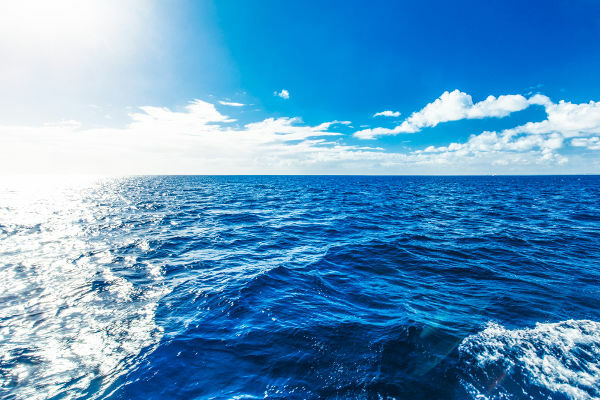We know that all types of electromagnetic waves carry energy regardless of their frequency. The energy that an electromagnetic wave carries depends on its frequency, and the higher the frequency, the greater the energy it carries. Depending on the conditions, this energy can be totally or partially transferred from the electromagnetic wave to a material medium.
This interaction depends on the type of material and wave characteristics, such as frequency and intensity. In particular, radiation interactions with living beings are very important. Electromagnetic waves, like other types of waves, can undergo reflection, refraction and diffraction when they propagate through the interface between two media.
Absorption
An electromagnetic wave, when propagating in a medium, can be absorbed, transferring energy to it. In this way, as it propagates, its amplitude gradually decreases.
An example of absorption is the passing of light through a dark glass or plastic, such as that in a sunglass lens. Dark glasses are also used in medicine packaging that can spoil when exposed to sunlight for long periods of time. This type of glass blocks ultraviolet radiation and some visible light.
absorption coefficient
A measure of a material's absorption capacity is its absorption coefficient, measured by the fraction of electromagnetic wave energy that is absorbed as it passes through it. For example, if we make a microwave beam pass through a piece of raw meat, and it absorbs the half the energy of this beam, we say that it has an absorption coefficient of 50% for this wave.
Do not stop now... There's more after the advertising ;)
On the other hand, if we used green light, we would see that it would be completely absorbed, not being able to pass through the piece of meat. In this case, the absorption coefficient is 100% and the object is called opaque. Absorption depends on the frequency of the electromagnetic wave.
We could calculate the absorption coefficient (A), from the intensity of the incident wave and the intensity of the wave transmitted by the material, by the expression:

The absorption coefficient varies between values zero and 1. If we multiply the value of A by 100%, we get the percentage value. Thus, A = 0.5 represents an absorption of 50% of the incident radiation by the material.
Absorption also depends on the thickness of the object. An aluminum sheet is completely opaque to visible light, but if its thickness is extremely thin, it may let some of the light through. Semi-transparent mirrors can be made with a very thin layer of aluminum deposited on the surface of a glass. On the other hand, a glass can be almost opaque if its thickness is too great.
In microwave ovens, the radiation used is partially absorbed by the food inside. The microwave frequency is chosen in such a way that this radiation is not fully absorbed when passing through the food, because if that happened, it would not be possible to cook or heat its part central.
By Domitiano Marques
Graduated in Physics
Would you like to reference this text in a school or academic work? Look:
SILVA, Domitiano Correa Marques da. "Radiation and Matter"; Brazil School. Available in: https://brasilescola.uol.com.br/fisica/radiacao-materia.htm. Accessed on June 27, 2021.
Physics

Did you know that pure water is not colorless as they say? In fact, water has a slightly bluish hue, resulting from the process of absorption of light incident on it. In this process, the liquid is able to absorb longer wavelengths of light, such as red and orange.



